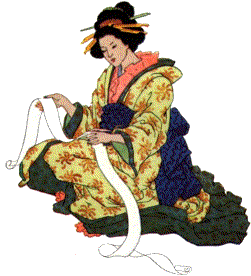
The stunning beauty of Asian Art





Chinese and Japanese Antiques
Over the last 10 years, my wife Moyra and I have collected quite a bit of Chinese and Japanese art. Pieces from the 20th C all the way to 800 BCE.
We are active on the Asian Arts website GOTHEBORG.COM as "Moyra"
Download our guide to buying Chinese Antiques! ----------------------------->
Please enjoy our modest collection.
My Inro Collection
In Feudal Japan, both men and women wore kimono. As kimono were made without any pockets, the Japanese devised a clever invention that would allow them to carry small items attached to the belt, or "obi" of the kimono.
This small multi-compartment box could carry medicine, or items like small personal seals and seal paste.
Inro were made of many materials, but most commonly lacquered paper or wood. Each compartment of the inro was secured by a cord, and that cord was threaded through a fastener, called an "ojime". The cord terminated in an exquisitely sculped object called a "netsuke", which was made or wood, metal, ivory or other material. Inro and Netsuke are very beautiful and valuable miniature works of art, and I am proud to show you my modest collection.








My Chinese Carved Lacquer Collection
Often called "cinnabar", Chinese carved lacquer is very time and labor intensive to make and very beautiful. Some of the pieces in my collection took several years to complete. I have pieces in my collecion from the 1930s all the way back to the Southern Song Dynasty.
Uchikake - Traditional Japanese Wedding Kimono
Traditionally, Japanese brides are married in very elaborate hand stiched wedding kimono which are made from the finest Japanese silks, and can cost up to $20,000 or more. These fine garments are superbly beautiful art, and are actually disappearing because more and more Japanese couples are opting for a western style wedding with western bridal dress . It is expected that this art will completely disappear within 20 years, so it is important to save these precious examples. We are fortunate to have about 20 of these kimono, and proudly display them on a rotating basis.




